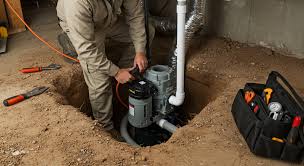Professional Faucet Installation & Sump Pump Installation

Faucet Installation Without the Headache: A Real-World Guide for Modern Homes
Swapping out an old faucet installation can totally change your kitchen or bathroom. Suddenly, everything feels cleaner and fresher. Little things that used to bug you like drips or weird water pressure just disappear. If you’ve never installed a faucet before, there’s no need to panic. With a bit of prep and the right tools, you can pull this off without losing your cool.
Why Bother Replacing Your Faucet?
A new faucet does more than just look good. When your old one drips, sticks, or acts up, it messes with your day. Upgrade to a solid faucet and things just work better. You’re not fighting with leaks or calling a plumber every other month.
Newer faucets are honestly a whole different game. They save water, the flow feels right, and the handles actually work the way you want. Taking the time to install one now helps you dodge hidden problems, no mold creeping in, no rusty spots, no slow leaks getting out of hand.
Don’t ignore the safety angle, either. A loose faucet can mess up your plumbing, and that drip you keep pretending isn’t a problem will only get worse.
And before you start, make sure those shutoff valves under the sink actually work. Getting soaked for my project is not fun.
Take your time with this. You’ll make your daily routine smoother and even add some value to your place, especially handy if you’re thinking about remodeling or selling.
How to Install a Faucet Here’s What to Do
Most faucets follow the same steps. First, round up your tools: basin wrench, plumber tape, adjustable pliers, and something to catch any spills.
Turn off the hot and cold water under the sink. Disconnect the supply lines and pull out the old faucet. Clean out the holes in the sink and you’ll probably find more gunk than you expect.
Drop the new faucet in, then tighten the mounting nuts with your basin wrench. Hook up the supply lines (don’t force anything) and use plumber tape on the threads to stop leaks. Once it’s all together, turn the water back to Nowland to check for any drips.
If you’re adding extras like a filter tap or sprayer, just follow the instructions they come with. Usually just a few more steps, nothing too crazy.
How Does Faucet Installation Stack Up Against Other DIY Plumbing?
If you’re new to home repairs, this is a great place to start. It’s way simpler than dealing with sump pump installation or replacing drains. Everything’s above the floor, the pipes aren’t too complicated, and you’ll pick up skills for bigger projects down the road.
Common Mistakes
Don’t crank down too hard on the fittings snug is enough. Go tighter and you’ll risk cracking something or setting yourself up for leaks later. Before you hook up the new faucet, flush your water lines to clear out debris, so you don’t clog things up.
Double-check your alignment, too. If the spout or handles are off center, you’ll notice every time you use it.
Before you call it done, run the faucet a few times. Check for leaks, weird flow, or anything funky under the sink.
Final Thoughts
Putting in a new faucet does more than just freshening up the space. You get solid plumbing and one less thing to stress about. Go slow, be patient, and you’ll end up with a result that looks like you hired a proverb if it’s your first try. Enjoy that upgrade. It’s a small fix that really makes a difference every day.




